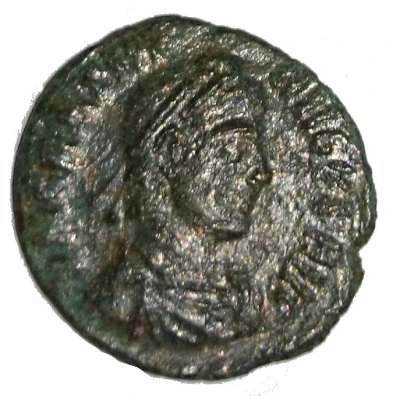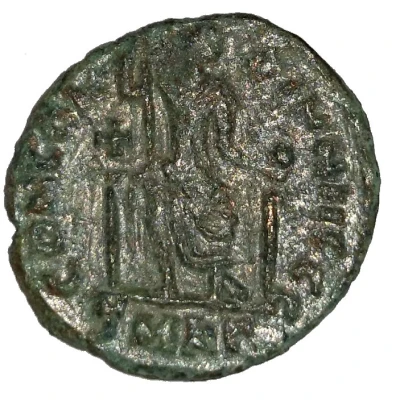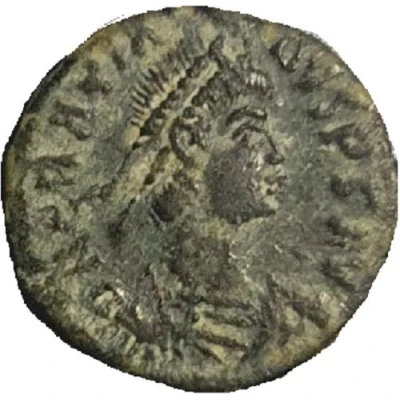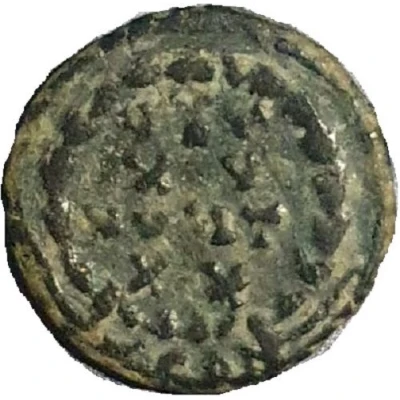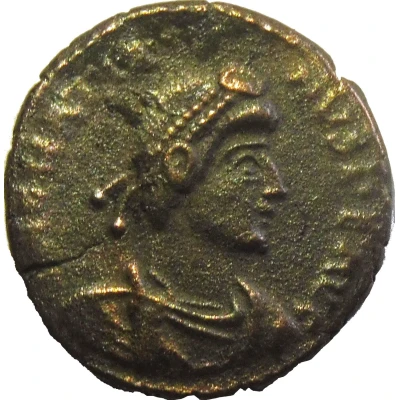
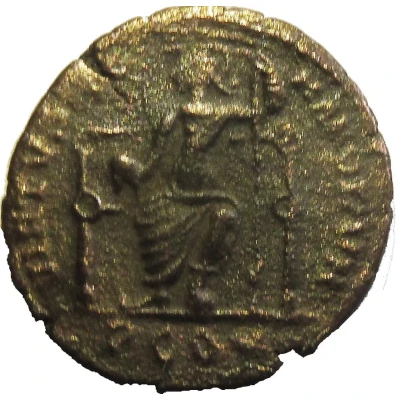

© Cycnos (CC BY-NC)
Nummus - Gratianus VIRTVS ROMANORVM; Arelate
| Bronze | 2.8 g | 17 mm |
| Issuer | Rome › Roman Empire (27 BC - 395 AD) |
|---|---|
| Emperor | Gratian (367-383) |
| Type | Standard circulation coin |
| Years | 378-383 |
| Value | Nummus (1⁄7200) |
| Currency | Solidus, Reform of Constantine (AD 310/324 – 395) |
| Composition | Bronze |
| Weight | 2.8 g |
| Diameter | 17 mm |
| Shape | Round (irregular) |
| Technique | Hammered |
| Demonetized | Yes |
| Updated | 2024-10-04 |
| Numista | N#153212 |
|---|---|
| Rarity index | 90% |
Reverse
Rome seated frontally on a throne, head turned to the left, holding a globe with the right hand and a long scepter with the left.
Script: Latin
Lettering: VIRTVS RO MANORVM
Comment
In 2018, there are about ten examples of this type that have come down to us for this workshop.One example is in the collections of the Museum of Art History in Vienna.
Interesting fact
One interesting fact about the Nummus - Gratianus coin is that it features a unique combination of imagery on its reverse side. The coin depicts a Roman soldier standing left, holding a spear and shield, while a fallen enemy lies at his feet. This design was meant to symbolize the power and strength of the Roman Empire, and it was a common motif on many Roman coins during this period. Additionally, the coin's obverse side features a portrait of Emperor Gratian, who ruled the Western Roman Empire from 378 to 383 AD. Overall, the Nummus - Gratianus coin offers a fascinating glimpse into the iconography and ideology of the Roman Empire during the late 4th century.
